0:30 Theravent Advanced Nightly Snore Therapy Television Commercial
MAKING A BROADCAST TELEVISION COMMERCIAL IN 34 “EASY” STEPS:
THE ANATOMY OF A TV COMMERCIAL
Client Name: Theravent Inc.
Corporate Headquarters: San Jose, California
Website: www.theraventsnoring.com
Product: Theravent Advanced Nightly Snore Therapy
 There’s no denying that there’s an art to making a great television commercial. When I started out in the film and video business over 17 years ago, there was hardly any readily available information about what steps were needed to make a broadcast spot from start to finish. I think the biggest reason for that knowledge gap is that the old model had multiple agencies and vendors working on the same campaign, so no single group had to know everything; they just needed to understand their part of the equation. Nowadays, with the cost of video decreasing and barriers to entry disappearing, as well as brands looking to spend less and get more, many advertisers are moving away from big agencies. ECG’s tagline has always been “From Concept To Completion In Style” because we handle everything from brand strategy, writing, production, and post-production (including animation and compositing) in house. The one-stop-shop is a growing business model. Many creative directors from big agencies have broken off to start their own production companies, and groups of talented young people are constantly getting together all over America to build companies just like ours. Thankfully we got into the business at the perfect time. We have navigated the terrain as all successful businesses do: by failing, learning, improving, and always pushing ourselves to do more and deliver a better product. With years of hard work and a willingness to grow our skillset on countless projects all over the world, we have become one of the premiere video production and post houses in Atlanta, Georgia. Its not an easy road, but it does pay dividends if you’re willing to put in the sweat equity. My hope is that this article will help younger producers and companies looking to break into the commercial game navigate the terrain a little easier, while also educating folks on either side of the camera about just how much planning, work and execution goes into producing what, to the layman, appears to be just a short piece of video.
There’s no denying that there’s an art to making a great television commercial. When I started out in the film and video business over 17 years ago, there was hardly any readily available information about what steps were needed to make a broadcast spot from start to finish. I think the biggest reason for that knowledge gap is that the old model had multiple agencies and vendors working on the same campaign, so no single group had to know everything; they just needed to understand their part of the equation. Nowadays, with the cost of video decreasing and barriers to entry disappearing, as well as brands looking to spend less and get more, many advertisers are moving away from big agencies. ECG’s tagline has always been “From Concept To Completion In Style” because we handle everything from brand strategy, writing, production, and post-production (including animation and compositing) in house. The one-stop-shop is a growing business model. Many creative directors from big agencies have broken off to start their own production companies, and groups of talented young people are constantly getting together all over America to build companies just like ours. Thankfully we got into the business at the perfect time. We have navigated the terrain as all successful businesses do: by failing, learning, improving, and always pushing ourselves to do more and deliver a better product. With years of hard work and a willingness to grow our skillset on countless projects all over the world, we have become one of the premiere video production and post houses in Atlanta, Georgia. Its not an easy road, but it does pay dividends if you’re willing to put in the sweat equity. My hope is that this article will help younger producers and companies looking to break into the commercial game navigate the terrain a little easier, while also educating folks on either side of the camera about just how much planning, work and execution goes into producing what, to the layman, appears to be just a short piece of video.
I respond to all comments so please drop me a note if you think I missed something (I’m not perfect) or if you have additional questions.
STEP 1: Get The Job! Work hard on your pitch and deliver it in a clear and concise way
In our situation, we were recommended by our media buyers over at Media Brokers International. Greg Vassar, who is one of the coolest and most honest media buyers I have ever met, presented us to his client Theravent, for the creation of two commercials. Theravent had a commercial already in the early development stages with a company they had previously been involved with. There were some good things in the original script and the client really liked the messaging so we used it as a jumping off point. It quickly evolved when we decided that as a brand we wanted to own “Snore Like A Freight Train” and “Snoring Stops Here”. We also wanted the spot to be memorable and the other script, while it had great messaging, wasn’t particularly “sticky” from a branding perspective.
STEP 2: Learn About Your Client And Their Product(s)
In order to market a product or service you need to fully understand it. In the case of Theravent we started by wearing the product around the office. Not the best way to test a snoring product, as we tend to breathe much differently when we are sleeping. After learning how to apply the device and wearing it around a bit, we really started to study the technology and the clinical studies that lead to its development. Finally, we conducted extensive interviews with the head of the company, Matt Williams, until we felt we understood everything there was to know about the product.
*Did you know humans are what’s called “Obligate Nose Breathers”? This means that by design we instinctively shut our mouths and breathe though our noses.
STEP 3: Engage A Media Buyer
It’s hard for clients to create their marketing budgets without knowing what their ad placement is going to cost, so getting a reliable media buyer (like Gregg Vassar at Media Broker International) is critical. Make sure you vet your media buyer. A good media buyer is very responsive and typically fights for what he/she thinks is best for the client. A good buyer knows that if they want to continue making money off these ad buys they need to have a good ROI (return on investment).
STEP 4: Map Out Potential Concepts
As stated above, the client came to us with a fairly fleshed out idea, but it wasn’t quite working for them. In the time between signing the contract and picking our winning concept we had at least five different ideas floating around. We would share various concept options with the client via our virtual meeting room or over the phone (since we’re located in Atlanta, GA and they’re in San Jose, CA). Mapping out different concepts a is very important step towards finding the right direction for a campaign. We’re always open to ideas from literally anyone and everyone in our organization. Sometimes serendipity strikes when & where you least expect it, so we’ve found that its never wise to limit options and voices at the concept stage. Our policy has always been “best idea wins”.
STEP 5: Write A Great Script
I recently switched from Final Draft to an online cloud-based scriptwriting platform called Celtx. It’s far from perfect, but they are the best option around currently. Using cloud-based scriptwriting software allows the writers and the client to easily communicate and make revisions in real time. This saves a ton of back-and-forth and really gets the client involved. We like keeping our clients intimately involved in the writing process because it ensures we get them exactly what they are looking for in terms of creative (and ROI).
We typically do anywhere from 5 -10 revisions before the script is locked. I always warn clients and writers not to over-analyze things. There typically comes a point where additional revisions aren’t actually improving the content. Pick an audience, pick a vision, and execute it well. If it’s memorable and informative, you will win. Don’t get stuck on details that don’t forward your plot or strengthen your messaging. The color of your lead characters shoes is likely unimportant (unless you’re shooting a shoe commercial).
 Step 6: Time The Script
Step 6: Time The Script
Before you present a final script you must time out the spot perfectly. With broadcast commercials you have a set amount of screen time to work with. In our case with Theravent, we had a thirty-second and a sixty-second spot. For voiceover talent, the client chose the very talented Ross Huguet, (you can hear a sample of his VO work HERE) to do the narration. Having worked with Ross on radio spots before, I know if I time myself reading the sixty- second spot, for example, ten times and I can get it between fifty-five seconds and sixty-two seconds that he can give me the reads at the appropriate speed needed.
These are the actual storyboards from the Theravent Advanced Nightly Snore Therapy television commercial.
Theravent Storyboards 60 Second Commercial: VIEW NOW
STEP 7: Storyboard!
Many people skip this step early in their careers, typically because of the cost and time involved. Storyboards give you and the client a a very good visual representation of what the spot will look like. For directors it ensures your vision works on the screen and allows for cost effective critical changes to take place before production. It allows the client to voice any concerns they may have as well. This will save you a ton of money in the long run, and will make the relationship run much smoother. Theravent’s situation was a perfect example of how storyboarding can save money once you get to production. In all our storyboards we had the male sleeping on his side. When the client saw this they informed us that a large majority of snoring takes place on the back, so it would be more realistic if the man in the commercial would be shown sleeping face up.
STEP 8: Create An Animatic
In video work, the storyboarding stage is usually followed by simplified mock-ups called “animatics” to give a better idea of how the finished product will look and feel with motion. At its simplest, an animatic is a series of still images edited together and displayed in sequence, which is what we created for Theravent. This allows us to work out any script, camera positioning, shot list and timing issues that may exist with the current set of storyboards.
This is the actual animatic from the Theravent Advanced Nightly Snore Therapy television spot.
STEP 9: Schedule Your Shoot
Thankfully, at ECG Productions we have an incredibly talented in-house staff. As a producer/director I have a wonderful support team. One of the key players on the scheduling side is one of my partners,Trey Gregory. Trey is without a doubt the best scheduler I have ever met. This skill makes him hands down the best AD I’ve ever worked with. I feel much less at ease when he’s not playing that role on set.
The problem is that, like most people at ECG, Trey has a multitude of talents and is pulled in many directions (as you will see later in this article.)
What makes Trey a great AD and an amazing scheduler is that he is very realistic with how long different types of shots will take. In order to keep things on-time and on-budget he must anticipate every detail. How long will it take to set up the dolly and crane? What happens if the dog does not cooperate? How long will resets of the house set take?
The list goes on and on, especially when you get into VFX shots. Thankfully Trey leads that department at ECG, which helps a ton! People who have a multitude of skill-sets are so valuable. At ECG Productions it’s a requirement. While you need to be a specialist, you also need to understand the other departments on set and have strong grasp of the relationship between production and post.
STEP 10: Get Great Talent
If your actors suck, so will your spot. Its as simple as that. Take the time to get the right talent for the job. We were lucky enough to find a real-life couple who were also professional actors. They fit exactly what we were looking for and we were able to find them via Facebook. The days of calling agents and dealing with exhaustive negotiations for no-name talent is over. With social media I can find great actors who won’t drag me down with long arbitration and complex contracts. There is so much talent out there! We had the pleasure of working with Ryan Felton and Jennifer Gullick. They came in to our office and we recorded the below sample for the client. Needless to say, they were perfect.
0:53 Theravent Advanced Nightly Snore Therapy | Talent Audition
Ryan and Jennifer audition for Theravent Commercial
We also booked a medical doctor who is very knowledgeable on the topic of sleep science. Dr. Adams has been using Theravent with his patients and getting fantastic results. We decided to do a full Q&A video with him to deploy on Theravent’s website and utilize for their internet marketing campaign. This is yet another way we are able to add value for our clients on every project we produce. We’re always trying to think of ways to get additional content specifically for the web while we’re already on set. We want to maximize every dollar our clients spend!
1:45 Theravent Advanced Nightly Snore Therapy | Dr. Testimonial
White Coat Testimonials From trusted authorities can greatly enhance sales of a product or service.
STEP 11: Engage A Production Design Team You Know Can Pull Off The Vision!
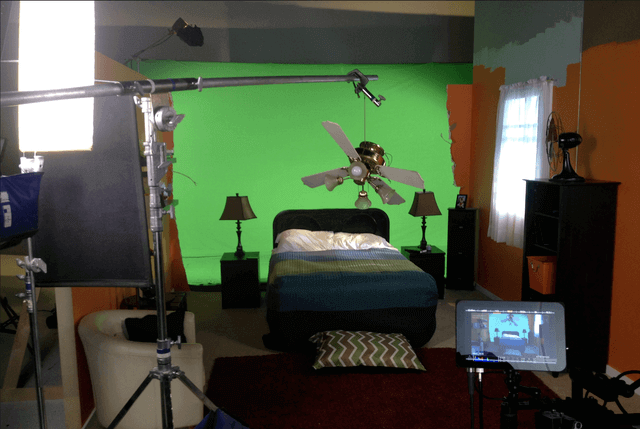 Production design is a critical element of any high production value television commercial. For those of you who don’t know what a production designer does, they’re the person responsible for the overall look of the set itself (in this case, the bedroom scene). For this task we hired our good friends at Brothers Young Productions. I called them up, told them I needed to build a bedroom that could look believable but also shake and have the back wall break way to reveal the the green screen backdrop for the train composite shots. They prepared a comprehensive price quote based on our needs and we booked them. From there we had a few conversations about the look of the room and I gave them some paint swatches from Home Depot based on the proposed color scheme. They connected with the visual effects department to compare notes and they were off to the races.
Production design is a critical element of any high production value television commercial. For those of you who don’t know what a production designer does, they’re the person responsible for the overall look of the set itself (in this case, the bedroom scene). For this task we hired our good friends at Brothers Young Productions. I called them up, told them I needed to build a bedroom that could look believable but also shake and have the back wall break way to reveal the the green screen backdrop for the train composite shots. They prepared a comprehensive price quote based on our needs and we booked them. From there we had a few conversations about the look of the room and I gave them some paint swatches from Home Depot based on the proposed color scheme. They connected with the visual effects department to compare notes and they were off to the races.
Having a trusted group of production design professionals is an amazing asset. Everything went very smoothly on set and as you can see the effect came together amazingly.
STEP 12: Book A Great Production Crew
Having a trusted, competent and efficient crew is critically important to creating a great broadcast spot. Making commercials is a team sport. You need many people with widely varied skill sets, working together to a common goal. If one part of that equation is broken, it quickly effects all the rest of the departments and you end up with a sub-par final product. At ECG we have most of our key positions and department heads on staff. This is an ideal situation because when you work as a finely-tuned unit for long periods of time, you can constantly improve and refine your skills not just as individuals, but as a highly capable video production team. If you’re booking people you’ve never worked with before, make sure you see samples of their work and call references. Always meet them in advance and make sure their personality meshes with the team you already have in place. You don’t have time to babysit or mediate disputes once you’re already on set. Your client’s dollar and their product, as well as your reputation, are at stake. Set your self up for success and you can be confident you’ll go out and hit home runs once you enter production.
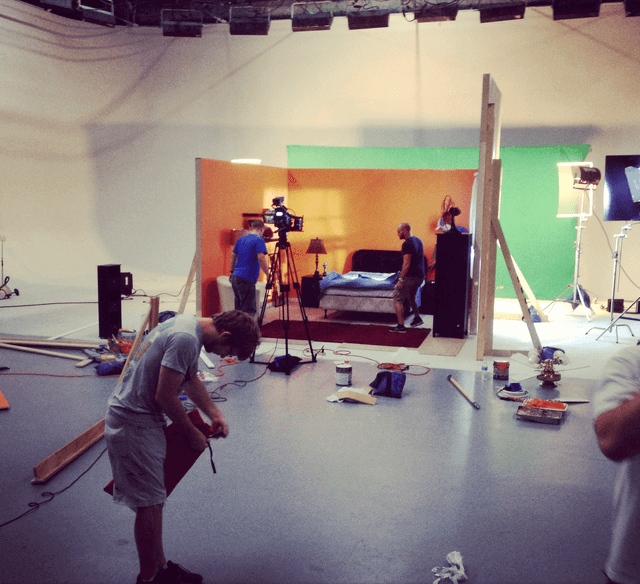 The Theravent crew consisted of the following positions over a 2.5 day production period:
The Theravent crew consisted of the following positions over a 2.5 day production period:
Producer/Director
Assistant Director/VFX Supervisor
Director of Photography
1st Assistant Camera
Audio Mixer
DIT
Gaffer
Grip
Rigging Grip
Production Designer
Art Director
Set Dresser
Makeup Artists
Production Assistants
STEP 13: Book the Appropriate Gear
A high quality production requires high quality equipment. Before you book gear for any video shoot, you want to make sure you’ve got the right tools for the job and you’ve anticipated all your needs. This particular commercial production had some very specific requirements. We were shooting on a green screen, we had a complex crane shot, and we had a number of dolly moves. As a producer and director, I typically let the department heads tell me what they need from a technical standpoint, then I try to ensure that their requirements won’t hinder my vision (and of course that it is covered in the budget).
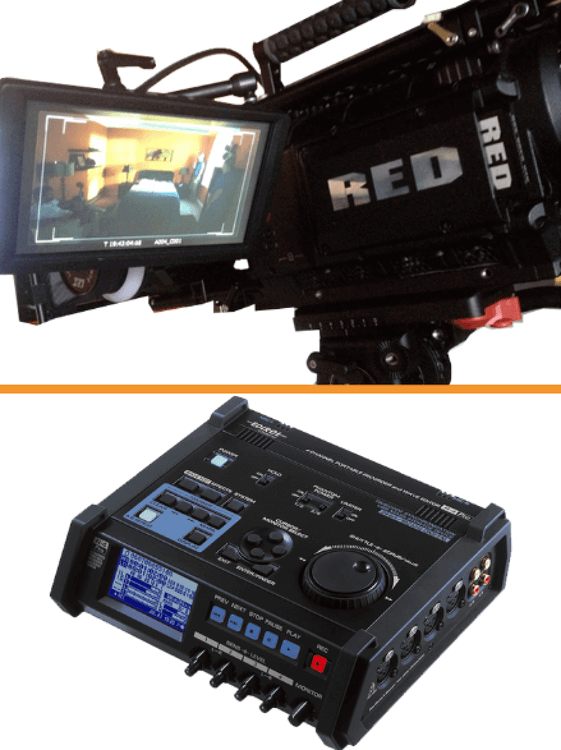 For this commercial we used the following video production gear:
For this commercial we used the following video production gear:
Camera/Lighting Department
Red EPIC
Zeiss prime lenses
Cartoni tripods and heads
ikan LED lighting
Mole Richardson 1Ks
Arri 1.2K HMI’s
Mickey Moles
Fisher Dolly
Jimmy Jib
Plenty of assorted grip gear and expendables
Audio Department
Edirol R4 Pro digital audio recorder
Lectrosonics wireless receivers/bodypack transmitters
Countryman B3 lavalier microphones
Sennheiser MKH416 shotgun microphone
Neumann KM185 MT hypercardioid microphone
Even more expendables
STEP 14: Book the Appropriate Locations
Locations are one of the most difficult things to lock down for a commercial television production, especially if you have a tight budget or deadline (or both). Locations can often make or break your production. Get locked into a location without properly scouting and you can end up in a spot with bad audio, lack of control, or just the plain wrong look. Don’t trust photos. See (and hear!) the location for yourself, or failing that, send a trusted scout. When you’re on your location scout look for outlets (and access to the breaker box), observe ceiling heights, ask what the electircal circuits are rated at, ensure you have access to air handling control, and take plenty of photos to share with your team.
For this spot we shot primarily in the studio. Our in-house studio was not large enough to accommodate the large set build, so we rented studio 2 at PC&E in Atlanta, GA. Rather than have them paint the cyc-wall green we opted for rigging a practical green screen backdrop. This saved us money that we were able to put into beefing up our lighting package. If you are going to rent a studio make sure you get all the details:
1. What are the requirements for the insurance certificate?
2. What are the energy use charges?
3. What are the hours of operation and how many hours will you have the studio before it costs additional money?
4. What are the load-in and load-out requirements?
5. Is the cyc-wall pre-lit?
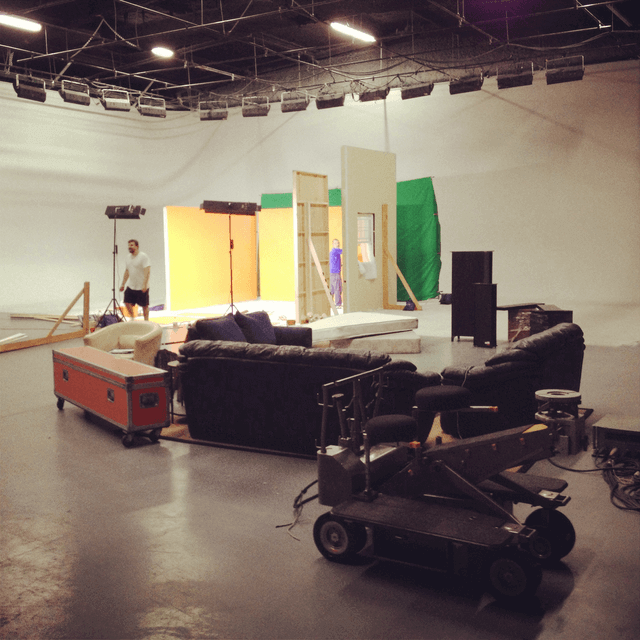 STEP 15: Coordinate Carefully With Your VFX Supervisor
STEP 15: Coordinate Carefully With Your VFX Supervisor
Whenever I have an idea that requires visual effects, I always speak with our Visual Effects Supervisor and our Head of Post-Produciton before presenting to the client. I do this because I want to make sure we can pull off the effect and what is required in terms of time, equipment, and money. As we move through the process, if there are changes to the VFX concept or its execution, post is the first department I speak to.
On set it is very important to have your VFX team right by your side at all times. It’s their job to contribute creatively as the scene plays out in front of us so that as a team we can ensure that all the effects translate to the screen flawlessly. For the Theravent campaign, our VFX Supervisor came up with the idea of breaking apart the actual drywall and sprinkling it on the ground after the room is destroyed to add more realism. At the end of each take (with the tripod locked down) we would run in and toss drywall chunks all around the room, then shoot a “plate” that could be used in the composite. The locked of tripod was critical as even a tiny movement of the camera would cause major difficulty in post. We also had to use a level to make sure the train we designed, and the shot of the dog in the backyard, matched the angle of the room. All of this meticulous detail ensures that all the various elements of the composite come together to form completely believable final shot.
STEP 16: Plan and Test All Visual Effects Shots
Whenever we’re preparing to execute a complicated shot like the one described above, we always do some form of testing. Testing is time and man-hours well spent! We shot several tests before principle photography for both lighting and compositing. This allowed us to make some tweaks that undeniably improved what eventually ended up on the screen. The same goes for complicated camera moves. If you have the time, test it before the shoot. It will save you time and heartache. Practice makes perfect!
This video displays the many steps involved in creating the composite for the Theravent train crashing through the bedroom effect.
STEP 17: Get on Set and Execute the Plan
They don’t call it a production for nothing. Things will go wrong even if you plan out everything exhaustively. Stay calm and solve the problems as they arise. Always doublecheck your work! Watch the shots as you go and make sure you are getting what you need. It’s always good to have multiple sets of eyes on the monitors (especially the client’s)!
*It’s important to note that all broadcast spots should be shot “center-punch-safe”. This means that all of your main action should take place in the 4×3, or SD, area of the screen. This allows you to deliver a single master to your ad distribution service (we use DG FastChannel) so they can easily insert your HD commercial without having to letterbox for SD (many stations broadcast in both HD and SD).
STEP 18: Back Up Your Media and Watch Playback
As the day proceeds, make sure you frequently backup your media in two discreet locations. Hire a knowledgable DIT to handle your footage. It is absolutely a full time job, especially with huge files like what the Red EPIC records at 5K. Before any media is returned to the camera department and wiped, make sure you have it backed up twice! Don’t just look at the filenames on a drive, spot check them and make sure they play and aren’t corrupted. The best way to kill a relationship with a client (and your reputation) is to lose a key piece of video that cost tens of thousands of dollars to produce.
STEP 19: Make Sure You Got the Shots You Needed!
Before you leave a location, always check (and double-check) to make sure you got everything you needed based on the final script. A good script supervisor and AD will work together closely to help you stay on top of this.
 STEP 20: Get a Great Meal, Lots of Cold Water and Healthy Snacks. Crafty is CRITICAL.
STEP 20: Get a Great Meal, Lots of Cold Water and Healthy Snacks. Crafty is CRITICAL.
Do something different, make it healthy and not too heavy. Your client and crew will appreciate it. Heavy food like pizza or pasta slows down the crew and makes them lethargic. When possible, supply healthy meals and snacks to keep your crew energized! The craft service table can be the key to the morale of your crew. If they feel like you cheaped out and craft was an afterthought, they’ll resent it. If they feel like you went the extra mile, they’ll go that much harder for you.
STEP 21: Start Post-Production on the Commercial ASAP!
I like to get into he edit immediately and create a full assembly pass of the commercial. That’s when the production is still fresh in my mind and I can when quickly solve edit problems because my knowledge of the raw media is so strong. Successful video production companies have the ability to turn around a great product quickly. You can’t turn down the intensity just because you’ve wrapped production.
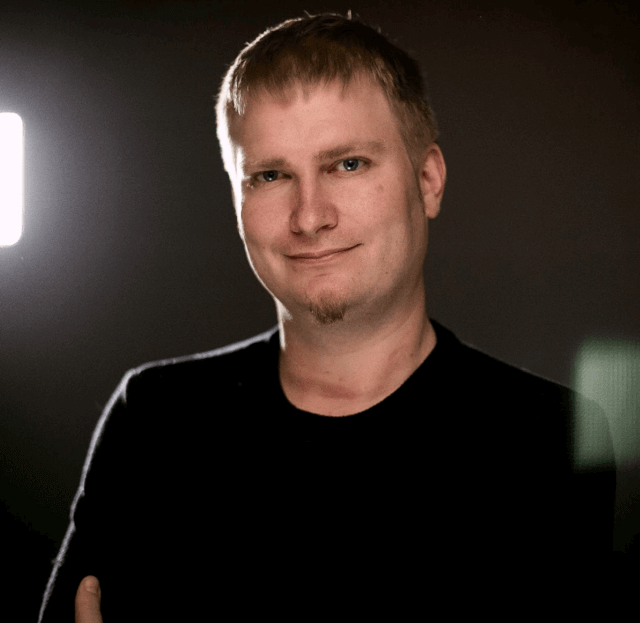 STEP 22: Work With a Great Video Editor(s)
STEP 22: Work With a Great Video Editor(s)
Thankfully I was working with two fantastic television commercial editors. My partner Jason Marraccini is our Head of Post-Production and by far one of the very best editors I have ever worked with. He is a great storyteller and a technical whiz. Jase (as most people call him) and I have worked together for nearly ten years and we understand each other very well, which makes the editing process both fun and effective. We disagree from time to time, but in the end we always end up going with the best idea and we don’t care who comes up with it. Being a good director and being a good editor is about compromise. For this project our talented producer/editor Brandon Peterson took the reigns and did a killer job! We went back and forth on the rough a few times and gathered some great feedback from the client. The first rough cut is a wonderful opportunity to put the client at ease. If its well executed, there will likely be less notes and the process will go more smoothly. Make sure to really spend some time polishing the first client-facing cut, even though its technically a “rough” You want them to feel they are in good hands while also not going to far into the process, in case they have substantive changes they want to make.
STEP 23: The Fine Cut
Once we have an approved rough cut we move into the fine cut. Often at this phase we are literally trimming single frames of video as we integrate all the client notes, perfecting the timing of the entire cut. Attention to detail at this stage is crucial, as the goal now is to get the commercial to “picture lock”, which means no additional changes to the edit will be made. Once the fine cut is complete, it should be sent to the client for review. If the client approves it can move on to visual effects.
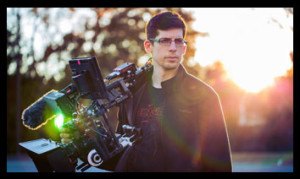 STEP 24: Visual Effects Pass and Color Grade
STEP 24: Visual Effects Pass and Color Grade
In addition to editorial services, ECG offers compositing, motion graphics, animation (both 3D and 2D) and color grading. We have several talented compositors and animators on staff, so many times multiple people will work on a project in tandem to maximize efficiency. During this phase it’s important for the director (or whoever is overseeing the project) to see rough previews and give notes before rendering takes place. Often full renders take hours to complete, so its critical to sign off on elements before moving forward to avoid multiple time consuming, processor-intensive processes. By the time the commercial leaves this phase of post-production there are typically well over one hundred hours invested in the final output. At this point, we should be nearing the home stretch unless the client has sweeping changes. Our process aims to prevent this situation as we have the client sign off on each incremented step as we move through production and post. Including the client in the process is critical to a commercial’s success.
STEP 25: The In-House Review
We have a very strict internal review process. We are brutal with each other. Egos are checked at the door and we only worry about the quality of the final product. Essentially we examine every frame on multiple devices: broadcast monitors, TVs, tablets, phones and laptop screens. We also upload a test copy to the web to see how the compression will look and make sure we aren’t seeing any artifacting. It’s always better that we catch the issues before the client. In the case of Theravent, the commercial was appearing a little dark on standard consumer televisions, so we made a few small tweaks to ensure the image locked perfect for home viewing. Of course there are specific broadcast standards that we follow, but there is wiggle room within those parameters to solve nearly any issue that could arise. We also create different grades for both web and TV so our content always looks great no matter where its screened.
STEP 26: Sound Design
Sound design is where the spot really comes to life for me. Imagine seeing the train smash through the wall without making a sound. Take a second and try it for yourself with the volume off. It’s just a different world. As one of the sound designers at ECG Productions and the lead sound designer on this particular commercial, I take great pride in the work we do in this area. For this particular spot, most of the sound design takes place in the first six seconds, as the train crashes through the house. To achieve the final effect there are over twenty-five different sounds layered together to create the crash, the train running through the house and of course the dog that’s revealed in the backyard! Yes, that dog bark is a sound design element and not audio recorded on location. When sound designing, make sure your levels never distract from the messaging. I had to ride the levels carefully, as the announcer begins to speak during the crash, to make sure his first line wasn’t difficult to understand. I was able to get a good balance, but it took time and many people listening to make sure we hit the mark. Its important to get opinions from people who you know will give you their honest appraisal . Some people just like to give feedback even if nothing is really wrong. When asked for feedback they feel they aren’t intelligent if they can’t find something wrong. Remove these people from your review process if possible. Its okay to say something is great on the first viewing! Just as its fine to say something isn’t working. Honest, thoughtful feedback is hugely beneficial. You’ll also notice some subtle sound design when the couple is sleeping. I added some crickets and the occasional owl hoot. In the kitchen scene you will hear the soft sound of birds singing as if there was a nearby window open (yep, that’s a virtual set too).
STEP 27: Another Client Review
Once the the television commercial is to the point where we believe it is ready for the world to see, we send it to the client for a final review. At this point it’s typically small fixes to get it just the way the client wants it. In the case of Theravent we had a couple revisions around the final logo placement. When the logo was originally designed for Theravent, their marketing firm always intended for it to appear on white. In the commercial you will see the Theravent Logo appear on a dark background. We made many tweaks to the final logo resolve until the client was 100% satisfied with visibility of the branding.
Step 28: Final Audio Mix
The final sound mix depends on what the client needs. Some clients want a Dolby 5.1 mix while others only require stereo. For Theravent we did a standard broadcast stereo mix and it sounds fantastic!
Step 29: Final Client Review
Now that we have the spot ready to go to air we want the client to sign off on the final output before we go into mastering. This will ensure that the client is satisfied and confident with commercial that will be going on the air.
Step 30: Tracking Numbers or URLs
Many direct response commercials will have different phone numbers and URL(s) based on the market they are airing in. This allows accurate tracking of what areas of the country are responding to the commercial; critical data as we build the advertising campaign moving forward. Something we did differently with Theravent as compared to previous direct response television commercial campaigns is assign a phone number specifically for Internet Marketing. Now we have the ability to track conversions on the web as well as from broadcast airings! This way we can track what works well for web vs. video and keep a good handle on where the spot is most effective.
Step 31: Mastering
Thankfully most of our in-house mastering is all digital these days. Many stations are equipped for digital delivery, but the creation of any tape-based masters are handled by our asset distributor who runs the traffic for the spot. We generate a full quality ProRes 422 (HQ) 1080i broadcast air master (with bars/tone and slate) and an additional 1080p master that will be archived alongside the project (and accompanying media) itself.
Step 32: Traffic
Simply put, ad trafficking is the process of supplying campaign creative materials and tracking links to publishers through an ad serving platform. As previously stated, we engage DG FastChannel for this service. Here’s how it works: our friends at Media Brokers International send us what’s called an insertion order. This insertion order tells us where and when the commercial is airing. We upload all the various version of the spot, marketed with unique ISCI codes (a string of four letters and four numbers) along with the insertion order. From there DG makes sure all the stations get the spot in their preferred tape or digital format, with a separate SD version if needed.
Step 33: Followthrough and Research
Once the spot goes to air, its really just the beginning. Based on the response to the commercial you may want to make multiple versions for A/B split testing. This can be as simple as changing a call to action or as difficult as changing message positioning within the spot itself. It’s impossible to know how a commercial will perform without spending some serious dollars on focus groups and research, and even then there are often large discrepancies because audiences are fickle.
Step 34: A/B Split Testing
A/B testing is a methodology in advertising of using two variants (and A version and a B version) which are the control and treatment in the controlled experiment. Such experiments are commonly used in web development and marketing, as well as in more traditional forms of advertising. This methodology is hugely important to maximize your client’s marketing spend and ensure a successful campaign. Our campaign launches on September 15th and I am sure we will start gathering a ton of data and making tweaks within a month or two. I’ll keep you up to date as we evolve this campaign.
As you can see, there is a TON of work and a myriad of processes that go into making a successful broadcast television advertising campaign. As I said at the beginning of this post, its truly an art and not something that can be done well without extensive knowledge and a talented team. At ECG Productions, we’ve been creating commercials and getting them on the air for years. Whether you’ve got a concept in mind or you need us to help you develop one from scratch, we’d love to put our years of experience and skill with the moving image to work for you. Reach out to a member of our team today and get the conversation started!
Final 0:60 Second Theravent Television Commercial
Read more by Jason Sirotin
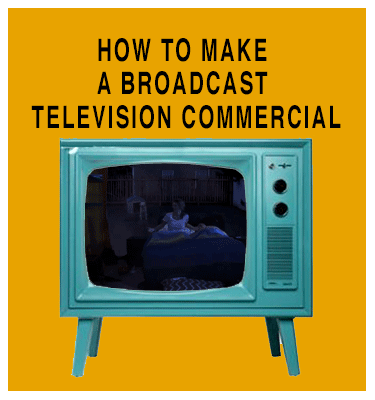

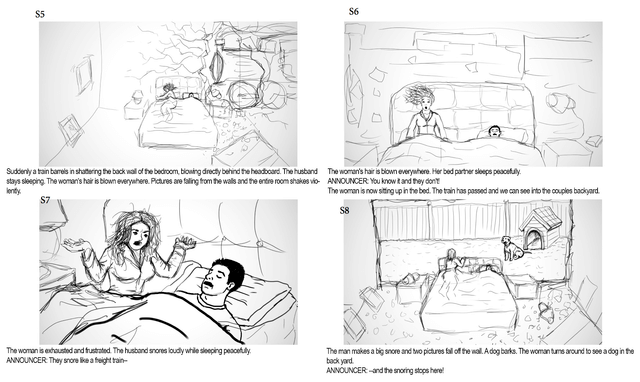
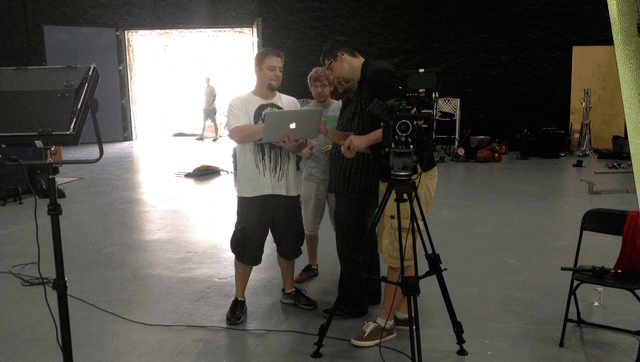
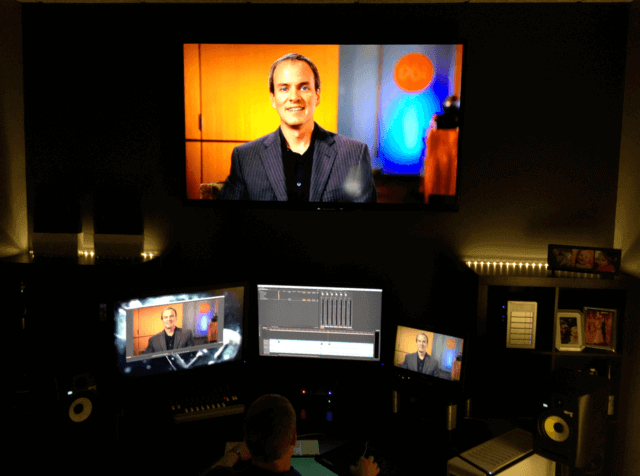

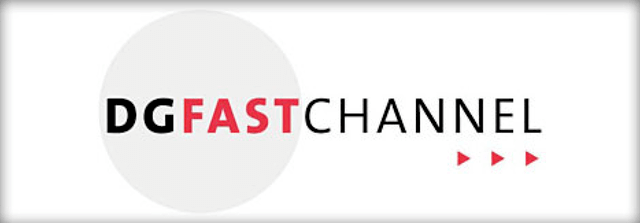

22 Responses
Clear, inrefmativo, simple. Could I send you some e-hugs?
WOW! Thank you for the time and effort you’ve put into this. Helpful and comprehensive without dragging.
Wish you guys everything of the best.
thanks now I can do my project
Thank you so much for this! You guys always have great bts insight!
Great , it helps a lot to see more clear the steps how to start and where to finish a project
I need help connecting to the right people
thanks for elaborating and gave this how to’s. Now we can work accordingly.
Production Houses in Lebenon, we have clients in Beruit. We should connect over email.
The Basics of writing and editing of TV. Advertising
Excellent!!! Thanks for the effort you have put in. This info certainly helps beginners like me.
Kishore
Hyderabad, India
Hands off to your work, refer me a best video editor and vfx application pls
hello i hate sports.
Thanks for this great resource. I use it when teaching the commercial production unit at
my high school’s Photojournalism class.
This was great stuff. Gave me everything I needed to create a project estimate.
That is the best news I have had all day. I am so glad you found the article helpful. Let me know if there is anything else you think we should write about. Thanks Jonathan!
Who can write more clearly than you about such matters!
I assure you, nobody, I’ve seen something like this only on https://edwardmccartan.com/book-review/. I enjoyed the article and assume you have more such stuff?
If yes, so please post it since it’s somewhat unusual for me
in the present moment, and not only for me, that is my view.
Hopefully, I can find an in-depth guide of yours
and be aware of all the news and the latest data.
I understand that there are variables that would skew the data in one direction or another, but I was wondering how long this entire process would take from start to actually being on TV on the average?
Thanks for sharing, this is mind blowing.